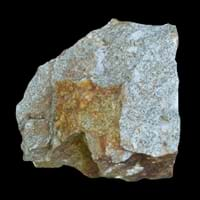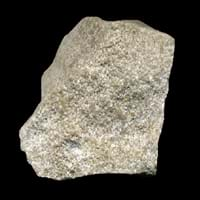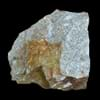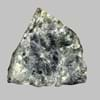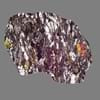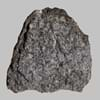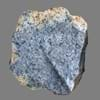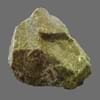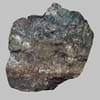Definition
Tonalite is a coarse-grained plutonic rock consisting mainly of sodic plagioclase, quartz, and hornblende or other mafic minerals with phaneritic texture
Oolite is a sedimentary rock formed from ooids, spherical grains which are composed of concentric layers of calcite
Origin
Tonale, Italy
Unknown
Discoverer
Unknown
Unknown
Etymology
From Tonale Pass, northern Italy, + -ite1
From oo- + -lite, after German Oolit. A rock consisting of fine grains of carbonate of lime
Class
Igneous Rocks
Sedimentary Rocks
Sub-Class
Durable Rock, Hard Rock
Durable Rock, Medium Hardness Rock
Other Categories
Coarse Grained Rock, Fine Grained Rock, Medium Grained Rock, Opaque Rock
Fine Grained Rock, Opaque Rock
Texture
Phaneritic
Clastic or Non-Clastic
Color
Black, Brown, Light to Dark Grey, White
Black, Blue, Brown, Cream, Green, Grey, Pink, Red, Silver, White, Yellow
Durability
Durable
Durable
Scratch Resistant
Yes
Yes
Appearance
Banded and Foilated
Rounded and Rough
Interior Uses
Decorative Aggregates, Entryways, Flooring, Homes, Interior Decoration
Decorative Aggregates, Flooring, Interior Decoration
Exterior Uses
As Building Stone, As Facing Stone, Paving Stone, Garden Decoration, Office Buildings
As Building Stone, As Facing Stone, Garden Decoration, Paving Stone
Other Architectural Uses
Curbing
Not Yet Used
Construction Industry
As Dimension Stone, Cement Manufacture, Cobblestones, Construction Aggregate, for Road Aggregate
Cement Manufacture, Cobblestones, Landscaping
Medical Industry
Not Yet Used
Not Yet Used
Antiquity Uses
Artifacts, Sculpture
Artifacts
Commercial Uses
Cemetery Markers, Creating Artwork
Creating Artwork, Jewelry, Used in aquariums
Types
Dacite
Not Available
Features
Is one of the oldest rock, Typically speckled black and white.
Available in lots of colors, Generally rough to touch, Very fine grained rock
Archaeological Significance
Monuments
Not Yet Used
Not Yet Used
Famous Monuments
Not Applicable
Not Applicable
Sculpture
Used
Not Yet Used
Famous Sculptures
Data Not Available
Not Applicable
Pictographs
Not Used
Used
Petroglyphs
Not Used
Used
Figurines
Used
Not Yet Used
Formation
When alkali feldspar is extracted from granite, it changes to granitoid and later, it becomes tonalite with quartz as major mineral.
Oolites form when layers of calcite are deposited around a sand grain or fossil piece and are rolled around in calm water, which makes them round.
Mineral Content
Albite, Amphibole, Apatite, Biotite, Feldspar, Hornblade, Ilmenite, Magnetite, Manganese Oxides, Olivine, Plagioclase, Pyroxene, Quartz, Sulfides, Titanite, Zircon
Calcite, Chert, Clay, Dolomite, Quartz, Sand, Silt
Compound Content
NaCl, CaO, MgO, Silicon Dioxide
Aluminium Oxide, Ca, NaCl, CaO, Iron(III) Oxide, FeO, MgO
Types of Metamorphism
Burial Metamorphism, Cataclastic Metamorphism, Contact Metamorphism, Hydrothermal Metamorphism, Impact Metamorphism, Regional Metamorphism
Not Applicable
Types of Weathering
Biological Weathering, Chemical Weathering, Mechanical Weathering
Biological Weathering, Chemical Weathering, Mechanical Weathering
Types of Erosion
Wind Erosion
Chemical Erosion, Coastal Erosion
Grain Size
Medium to Fine Coarse Grained
Fine Grained
Fracture
Conchoidal
Conchoidal
Streak
Bluish Black
White
Porosity
Very Less Porous
Less Porous
Luster
Subvitreous to Dull
Pearly to Shiny
Cleavage
Not Available
Non-Existent
Specific Gravity
2.86-3
Not Available
Transparency
Opaque
Opaque
Density
2.73 g/cm3
Not Available
Specific Heat Capacity
Not Available
Resistance
Heat Resistant, Pressure Resistant, Water Resistant
Heat Resistant, Wear Resistant
Deposits in Eastern Continents
Asia
Not Yet Found
Brunei, India, Indonesia, Malaysia, Singapore, Thailand, Vietnam
Africa
Egypt
Cameroon, Chad, Ghana, Kenya, Malawi, Sudan, Tanzania, Togo, Zambia, Zimbabwe
Europe
Finland, Germany, Italy, Romania, Sweden, Turkey
United Kingdom
Others
Not Yet Found
Not Yet Found
Deposits in Western Continents
South America
Argentina, Bolivia, Chile, Colombia, Ecuador, Peru
Colombia
Deposits in Oceania Continent
Australia
New Zealand, South Australia, Western Australia
Adelaide, New Zealand, Queensland, Tonga, Victoria, Yorke Peninsula
All about Tonalite and Oolite Properties
Know all about Tonalite and Oolite properties here. All properties of rocks are important as they define the type of rock and its application. Tonalite belongs to Igneous Rocks while Oolite belongs to Sedimentary Rocks.Texture of Tonalite is Phaneritic whereas that of Oolite is Clastic or Non-Clastic. Tonalite appears Banded and Foilated and Oolite appears Rounded and Rough. The luster of Tonalite is subvitreous to dull while that of Oolite is pearly to shiny. Tonalite is available in black, brown, light to dark grey, white colors whereas Oolite is available in black, blue, brown, cream, green, grey, pink, red, silver, white, yellow colors. The commercial uses of Tonalite are cemetery markers, creating artwork and that of Oolite are creating artwork, jewelry, used in aquariums.
